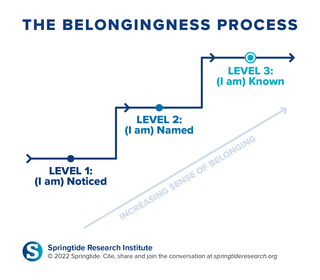Health
3 Key Components of Mental Wellness for Students
Make an impact with connection, expectations, and purpose.
Posted September 8, 2022 Reviewed by Vanessa Lancaster
Key points
- School-related stress is a major factor in young people's mental health.
- Schools, and the adults within them, are perfectly positioned to prioritize mental well-being in supportive environments.
- Focusing on connection, expectations, and purpose can set a foundation for youth mental wellness that helps prevent problems.
Ara, a 16-year-old high school student, said,
I have friends who are punished if they don’t get A’s. And I think it puts a lot of stress on them, especially when they’re already going through problems that are not recognized by their parents. I think there is a lot of pressure put on us to do really well, to balance all of these things, you know. When our mental health concerns are not being heard, it makes it even harder.

At Springtide Research Institute, we explore the inner and outer lives of people between the ages of 13-25, and we’ve surveyed more than 3,000 young people over the past year about their mental health.
We know the frequency of mental health crises among teens and young adults is rising, and we need strategies to deal with them when they strike.
Yet, our recommendations take a step back and focus on creating spaces that promote mental wellness in the first place–and schools are an ideal place to build these environments.
Connection, Expectations, and Purpose
Focusing on connection, expectations, and purpose serves as a needed complement to individual efforts around mental health. As all educators know, it takes a village–and this approach can create an ecosystem of collective support.
Connection: Creating connection starts with meaningful relationships. Psychological research shows that feeling connected can lower anxiety and depression and improve self-esteem and the immune system and stimulate centers in the brain that produce feelings of happiness.
Strong connections lead to a sense of belonging, which correlates to better mental wellness for young people.
Schools are the ideal place for the types of connections that could lead to a sense of belonging, but young people tell us that doesn’t always happen. Only 20 percent of those we surveyed said they feel like they belong at school and people know who they are.
As we’ve talked to young people over time, we uncovered three distinct steps we call the belongingness process: the movement of a young person being noticed, named, and known.
Adults in a school can take simple steps to ensure that young people are experiencing some part of this process. Simply paying attention to a young person, using their name and correct pronouns, and engaging in conversation that shows they are accepted without judgment are ways to nurture movement toward belonging.
Expectations: Students are overwhelmed—the pressure to succeed causes stress, anxiety, and burnout. Obviously, schools have standards and expectations for students, and most of the students we surveyed say they feel like they have the tools they need to succeed.
Yet, aligning those tools with expectations in a way that makes them achievable is key to improving their mental health. Young people want to be pushed and challenged but don’t want to be defeated.
One way to avoid that outcome is to ensure that alignment between tools and expectations (particularly those involving student achievement and performance) is happening evenly. More than two out of three students told us that “only certain types of students can really thrive here,” suggesting that those with more privilege or resources fare better at achieving expectations.
Based on the context and dynamics at your institution, identify those students who might feel as if they are not set up for success and let them tell you where the gaps in alignment may lie.
Purpose: Part of the school experience involves discovering purpose. At school, this means helping students develop a sense of what they want to accomplish and who they want to become–and it’s critical for mental wellness. Students who felt like they were needed at school and effectively contributing to their groups reported “flourishing a lot” in their mental health.
One basic way to help students discover purpose is to ask more questions. This could be achieved with a group reflection session in class or by prompting students to explore answers to their questions. Any activity that allows them access to new information about their interests and passions can facilitate finding purpose.
Thankfully, many schools and educators already do many of these things very well. Yet when schools uniformly foster connection, align expectations, and help develop purpose, they’re taking steps to go beyond treating the acute issues to addressing the conditions that are causing a crisis in the first place. If we want to see young people thrive, even amidst the pressures of this day and age, creating spaces where mental wellness is prioritized is an ideal first step.
References
Springtide Research Institute (2022). Mental Health & Gen Z: What Educators Need to Know. Springtide Research Institute.
Flatt, A.K. (2013). A Suffering generation: Six factors contributing to the mental health crisis in North American higher education. College Quarterly, 16(1).
Prowse, R., Sherratt, F., Abizaid, A., Gabrys, R.L., Hellemans, K.G.C., Patterson, Z.R., & McQuaid, R.J. (2021). Coping with the COVID-19 Pandemic: Examining gender differences in stress and mental health among university students. Frontiers in Psychiatry, 12. https://doi.org/10.3389/fpsyt.2021.650759.




